
by California Casualty | Auto Insurance Info |
Breaking down on a busy street or highway can be dangerous. Roadside assistance is an add-on coverage that’s at your service 24/7 to help you get back on the road safely if you are left stranded due to an accident or car problems.
Whether you run out of gas, a tire blows out, or you are experiencing any other kind of car or engine trouble, roadside assistance has your back. Instead of spending money on an expensive tow, you can rest assured knowing that you are covered when you choose to add it on to your auto insurance policy.
Plus, when you add roadside assistance to your coverage you will pay as little as around $1 a month. This is a coverage you can’t afford to NOT have!
What Will Roadside Assistance Cover?
When you add- on Express Road Service to your California Casualty auto policy, you will be covered if you need assistance with
- Jump starts
- Lockouts
- Tire repair or change
- Gas, oil, and water delivery
- Towing to the nearest repair facility
And you won’t even have to remember to make additional payments to keep roadside assistance. Your cost of coverage will be rolled into your monthly premium to help make payments more convenient for you.
Talk to your insurance agent to understand what is covered. Ask about additional services and the exclusions and limitations when adding roadside assistance to your policy.
Why Do I Need It?
Roadside assistance offers you fast, reliable service available to you when you need it most. Here’s why everyone should add this coverage on to their auto insurance policy.
- Affordability. With annual prices as low as $1 dollar a month, you won’t even feel like you’re paying for additional coverage. Rates at these prices can’t be beaten even by other big-name clubs or associations like AAA.
- 24/7 hour service. No matter if your car breaks down at 12 a.m. or 12 p.m. you will never be stranded, roadside assistance will come to you at any time of day or night to help service or tow your vehicle.
- Peace of mind. If your car is older, or starts having mechanical issues you can have peace of mind driving to your destination (no matter how far) knowing that roadside assistance is a phone call away.
- Towing. Car tows are very common and can be costly if you do not pay for roadside assistance. The average cost for a car tow without roadside coverage is $109.
- Teen Driver Safety. If your family has a teen driver on the road, as parents you can breathe easier when handing over the keys knowing your young driver can call roadside assistance for help if the unexpected were to happen.
If you have an auto policy without roadside assistance, what are you waiting for? Call and add-on this cheap and essential coverage today at: 1.800.800.9410
This article is furnished by California Casualty, providing auto and home insurance to educators, law enforcement officers, firefighters, and nurses. Get a quote at 1.866.704.8614 or www.calcas.com.
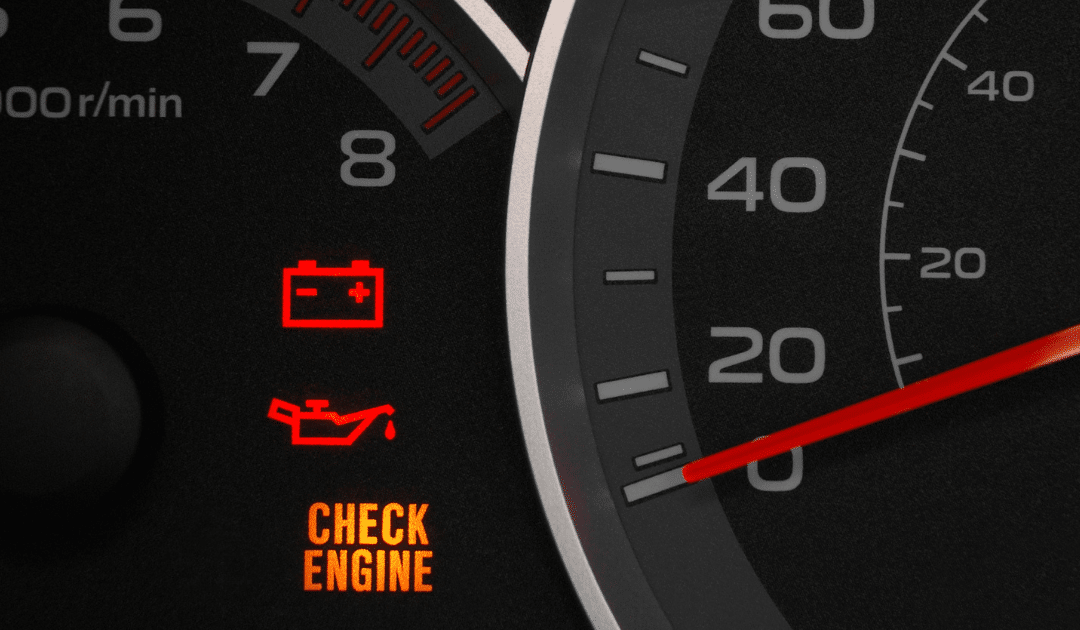
by California Casualty | Auto Insurance Info |
You let them get their license, and you’ve handed over the keys. But are they truly ready?
Sure, you set rules for when they drive, where they go, and who rides with them. You also taught them the dangers of distracted driving. But, have you taught them about the 3,000lb piece of machinery that they are now handling?
Driving responsibility doesn’t stop with passing the driver’s test, turning down the radio, adjusting the mirrors, and using the turn signals. Before they get behind the wheel, young drivers should know basic vehicle care, maintenance, and warning signs.
Wiper blades and washer fluids – if they can’t see where they are going, how will they get there safely? Get your young driver in the habit of checking their wiper blades and washer fluid levels. There are super easy fixes to help correct wiper blade problems. And be sure they also know how to refill washer fluid (where it goes and what product to use).
Lights – it’s important to always have clean headlights and working rear lights, brake lights, turn signals and reverse lights. These are the ways other drivers know what actions to expect from your teen’s vehicle. Show your teen how to check them regularly. Remind them of the importance of properly functioning lights. Teach them how to change them or how they can contact the dealership to have them changed by a technician.
Tire pressure, tread, and rotation – show your teen driver where the PSI rate is listed on the sticker of the driver’s door jam. Teach them how to check their tire pressure. Show them how to fill their tires with air or reach out to the dealership if they need more nitrogen. Be sure to explain that tire pressure can change with cooler and warmer weather, so it’s smarter to check more often. Show them, the quarter test, not the penny test to check tire tread. Explain the importance of tire rotations to help tires wear evenly. Share with them the notion that rotating and balancing tires should be done on a routine schedule that makes the most of their tire investment.
Check fluids and change the oil – have your young driver get in the habit of checking their oil levels, brake fluid, antifreeze, and transmission fluid. Explain what products go where and how to maintain the right levels as needed. Teach them how to change their oil, or how often to schedule an oil change on a regular basis.
A car battery can fail at any time, but there are usually warning signs. If new drivers know how they function and what the signs are for replacement, then they can be more proactive when a new battery is needed. A completely dead battery is a safety issue if they are stranded.
Knowing the dashboard warning lights can make a world of a difference for the safety of your young driver and their passengers. There are 15 common warning lights on your dashboard that hold significant meaning. Have your new driver review them with you!
And in case of a roadside emergency, give your teen a list of contacts to call, do a run-through of how to change a tire, gift them an emergency roadside kit.
It’s a lot to digest, but the responsibility of becoming a driver is worth the time invested in sharing the knowledge above. It’s another layer of protection to keeping your driver safe.
Want more tips for teaching your young driver the rules on and off of the road? Click here for more teen driver safety tips and here for the driving experiences your teen needs.
This article is furnished by California Casualty, providing auto and home insurance to educators, law enforcement officers, firefighters, and nurses. Get a quote at 1.866.704.8614 or www.calcas.com.

by California Casualty | Auto Insurance Info |
No one likes getting cut off in traffic or the feeling of a tailgater trailing closely behind. When those feelings cross the line from irritation to retaliatory action, that’s road rage. Road rage, as most of us know, is significant anger and/or aggression directed toward one driver by another. It can be in the form of insults, gestures, physical attacks, and even dangerous driving maneuvers that can run you off the road.
Road rage is a form of distracted driving that can lead to collisions, injuries, and even death. Knowing how to keep your cool behind the wheel, and what to do if you are targeted by road rage, will help prevent accidents and bring you safely back home.
Road rage is more common than you think.
The majority of American drivers – almost 80 percent – admitted to aggressive driving or feelings of road rage in 2019, according to the AAA Foundation. The Foundation’s analysis of 10,000+ road rage incidents over 7 years revealed 12,610 injuries and 218 deaths. Road rage is a factor in more than half of all fatal collisions.
Know the causes of road rage.
There are many triggers for road rage. Most often, aggressive behavior stems from angry emotions that get out of hand due to situational circumstances, such as traffic conditions, or the driver’s own mental state.
-
- Road rage can be a habitual or learned behavior. Drivers may be in the habit of yelling at cars that cut them off. They may perceive the behavior as normal.
-
- Cars provide a layer of anonymity that makes it easy to “rage.” In road rage incidents, drivers do not see another person; they see a vehicle. As a result, they don’t think of the individual/family they will be affecting when they lash out at another driver.
-
- Drivers who “rage” may have a disregard for the law. They may be speeders and tailgaters, and have the perception that they are above the law.
-
- Traffic congestion and delays can cause road rage. Drivers who are running late are more likely to get upset during heavy traffic conditions.
-
- Distracted driving may prompt road rage. Drivers on their cell phones could contribute to road rage reactions when they don’t move as planned through traffic.
Know how to prevent road rage.
You don’t have to be an aggressive driver to experience road rage. It can happen to anyone! Here are some ways to stay cool behind the wheel.
-
- Make sure that you’re well-rested and ready to drive. Get enough sleep. Limit alcohol intake. If you’ll be traveling long distances, take time for regular stops to recharge.
-
- Leave plenty of time for your trip. Drivers who leave early are less likely to be stressed about traffic congestion or angry at other drivers who may delay the journey.
-
- Play soothing music. Set the mood for a relaxing trip with a soothing soundtrack.
-
- Don’t honk or yell. Raising your voice and honking your horn only serves to escalate a situation.
-
- Don’t tailgate. Leaving enough space between you and other cars helps prevent incidents that can lead to road rage.
-
- Remember to show some empathy. Everyone has a bad day now and again. Give your fellow driver the benefit of the doubt. He/she may not have meant to cut you off.
Know what to do If you’re a victim of road rage.
It can be frightening if you are the target of road rage. The most important thing to remember is to keep your cool, and follow these suggestions.
-
- Don’t return gestures. Don’t make eye contact. Engaging with an angry driver only escalates the potential for road rage. Keep your eyes on the road and, if possible, distance yourself from aggressive drivers.
-
- If you’re being tailgated, switch lanes. Try to move out of range of the other driver. Do not slam on the brakes to get them to back off. That tactic is dangerous.
-
- Stay behind an aggressive driver. Being in front of an aggressive driver puts you in their field of vision. Moving behind, and lengthening your distance, can help.
-
- Don’t pull over and stop. Unless you are stopping at a stoplight or stop sign, do not stop. Stopping your car is the precursor to engaging with the other driver—something that you do not want to do.
-
- If the harassment continues, pull into a police station. There may be times when you cannot shake the aggressive driver. In those cases, the best tactic is to head to the nearest police station.
Look out for road rage during these high-travel months.
Any time there is traffic and congestion on the roads is a time that could trigger road rage. The summer months, and especially August, have been shown to be prone to incidents of road rage. Similarly, holiday travel in December with its associated congestion, traffic delays, and inclement weather, can produce the conditions ripe for road rage.
Plan your travel accordingly and follow these tips to help keep you and your family safe.
Safe travels.
This article is furnished by California Casualty, providing auto and home insurance to educators, law enforcement officers, firefighters, and nurses. Get a quote at 1.866.704.8614 or www.calcas.com.
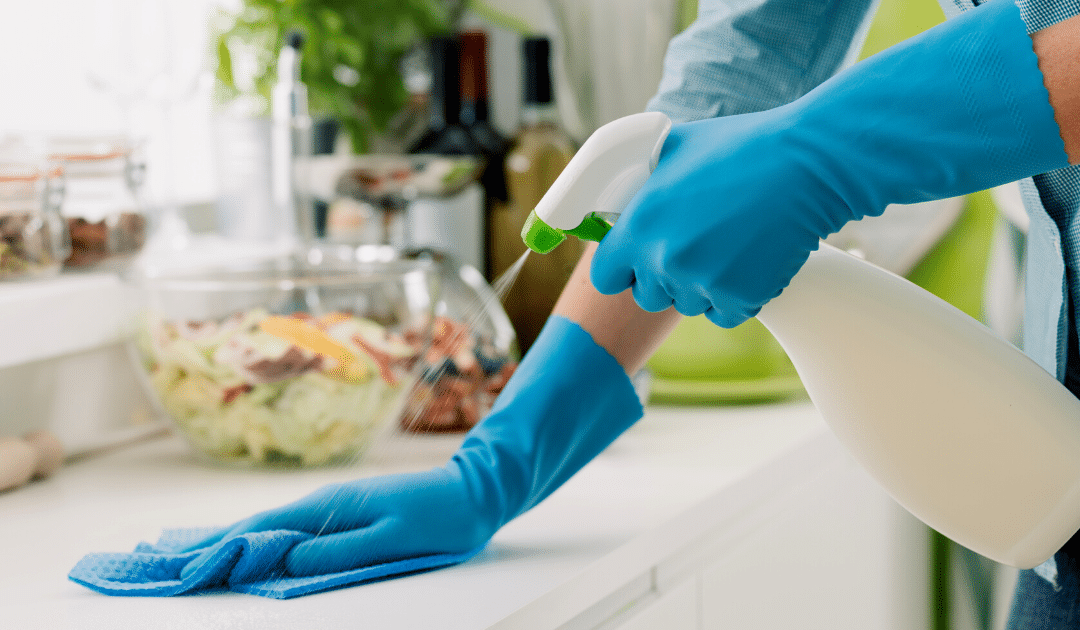
by California Casualty | Homeowners Insurance Info |
Have you heard the saying going around recently that “cleaning your house while everyone is home is like brushing your teeth while eating Oreos?” It’s so gross, but so true, especially when everyone is home together during the summer- living life and making messes.
These 5 quick cleaning hacks will help YOUR FAMILY get (and keep) your house clean.
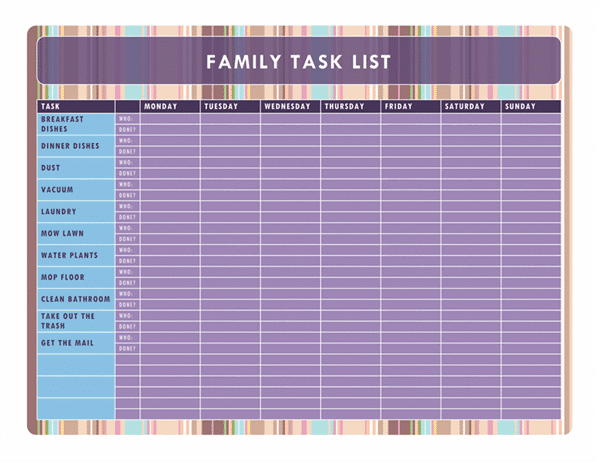
Make It a Team Effort
It’s time to assign chores. Everyone at home contributes to the mess, so each can be responsible for helping to clean it up. You can easily assign tasks to each family member (kids included) by using this age-appropriate chore list cheat sheet. You can get creative and write down the chores by person on a board piece of paper in plain view, or download an editable chore chart that you can print and hang.
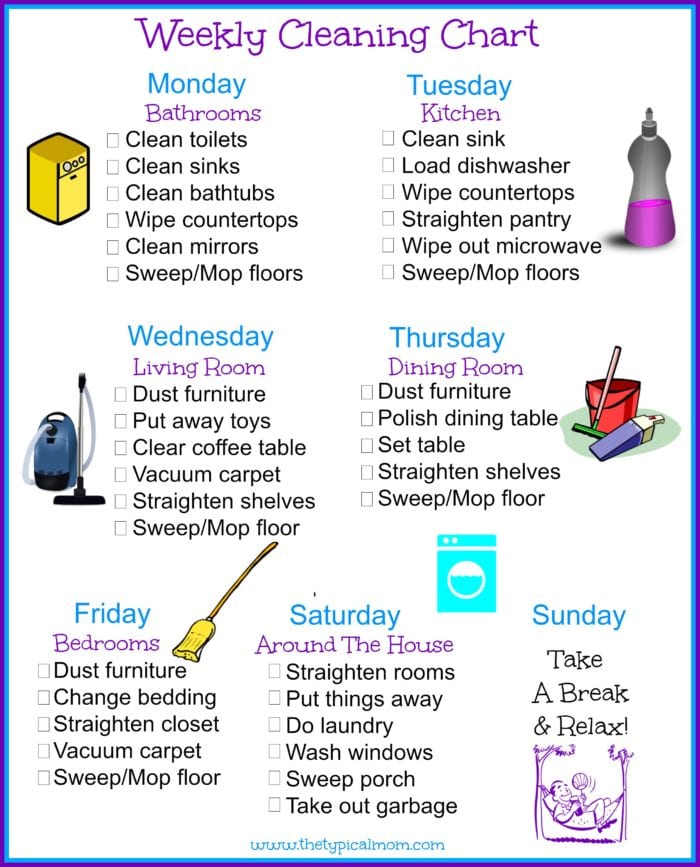
Get In the Habit
It’s all about muscle memory. If you create a daily cleaning schedule for all to follow, the assigned tasks are completed in less time than trying to tackle it all at once. Plus, the weekly schedule will help you stay on top of what needs to get done and avoid the procrastination that typically hinders our approach to housework. Another pro tip: make your bed every day.
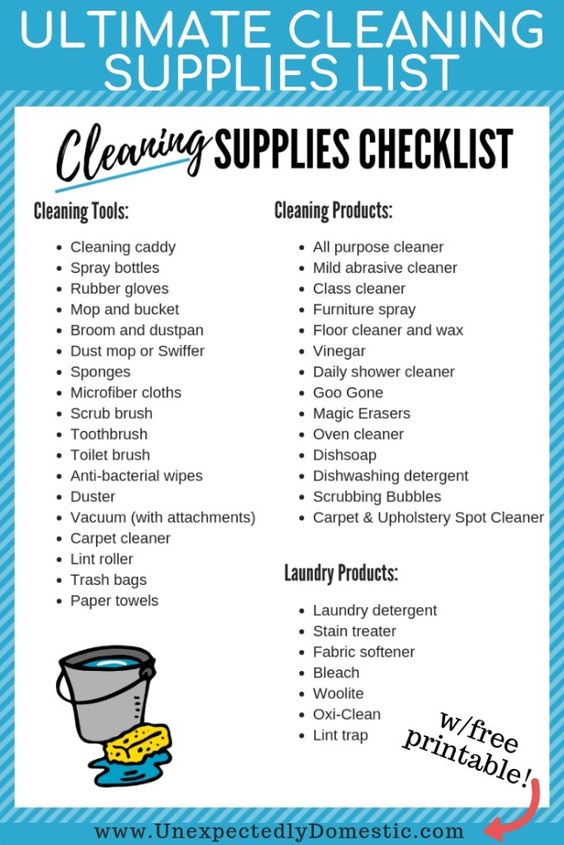
Have the Right Tools
Like any job, having the right tools (in good working condition!) will make getting the job done so much easier. A good vacuum (with attachments), microfiber cloths, a bucket and mop, and a cleaning caddy filled with your favorite cleaners are just a few of the housekeeping essentials recommended. Here’s a more detailed list of recommendations. You may want to test your options to select the right tools for your home.
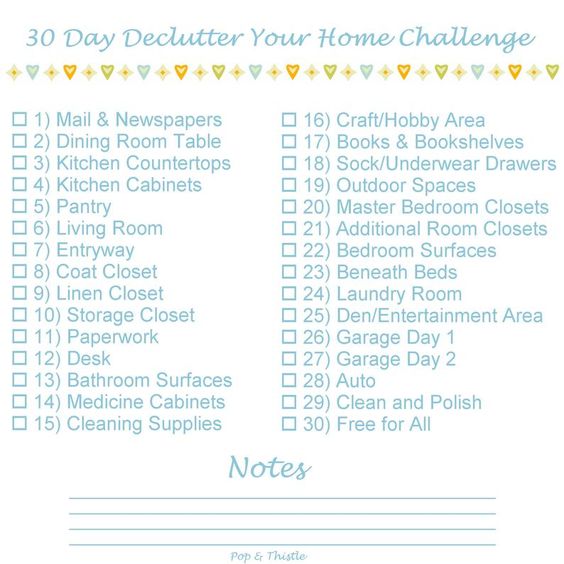
Pick Up, Pick Up, Pick Up
To keep your home clutter-free, it’s important that everything have a place. Putting things away immediately after use will save you time (since you won’t need to search for items), save you money (since you won’t need to replace items forgotten about or misplaced), and save you space. Here are other ideas to keeping your home clutter-free on a regular basis.
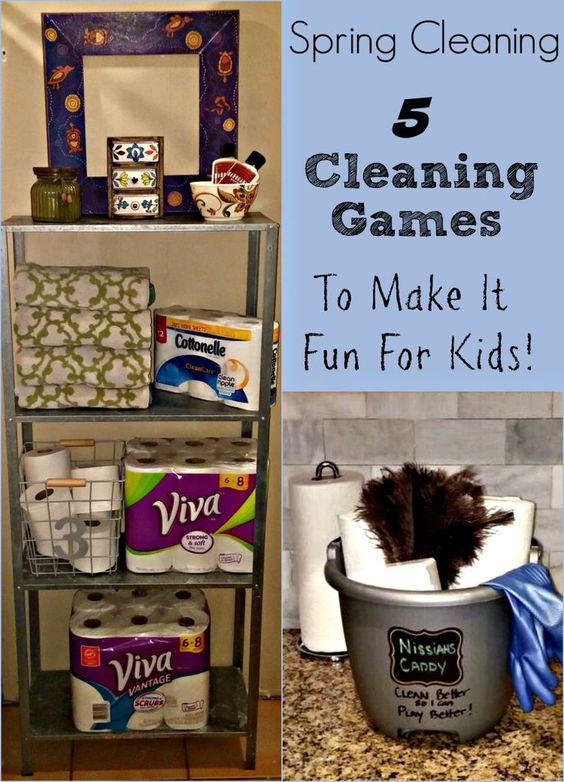
Stay Positive
Research tips and tricks that will make the chore of housekeeping seem more fun and less work. Simple things like playing music and creating family chore or cleaning games will keep everyone motivated. Positive reinforcement will go a long way. Let your loved ones know how much you appreciate their help.
Once you’ve had a chance to give these a try, let us know how they worked. And if you have additional tricks, tips, or recommendations, please share them with us as well. Housework is a way of life, but it doesn’t have to be such a chore! (pun intended)
This article is furnished by California Casualty, providing auto and home insurance to educators, law enforcement officers, firefighters, and nurses. Get a quote at 1.866.704.8614 or www.calcas.com.
by California Casualty | News |
We have amazing employees at California Casualty. The New Employee Spotlight is a series aiming to highlight the talented individuals that are brand new to our team. Please help us give them a warm welcome!
Today we’re spotlighting New Total Loss Clerk, Jacob Butler.
Let’s get to know Jacob!

What California Casualty office do you work in?
Colorado Springs!
What is one interesting fact you want us to know about you?
I’m a 60-year-old stuck in a 24-year-old’s body.
If you could eat one food for the rest of your life, what would it be?
Steak
What do you like to do on the weekends?
Hiking
Spending time with friends
Sleep
What made you want to start your new career with California Casualty?
I had always heard about how good California Casualty was as an employer, so I wanted to be a part of that atmosphere.
If you want to learn more about Jacob or are interested in a career at California Casualty, connect with him on LinkedIn! Or visit our careers page at https://www.calcas.com/careers










